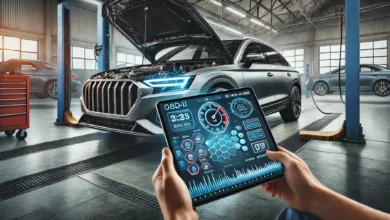The Evolution of Smart Homes: IoT Trends to Watch in 2024
Introduction
Smart homes have rapidly moved from a futuristic concept to a tangible reality for many people around the world. At the heart of this shift is the Internet of Things (IoT), a technology that enables everyday devices to connect, communicate, and act autonomously. From smart thermostats and lighting systems to voice-activated assistants and security cameras, the IoT is transforming how we live, making homes more efficient, secure, and comfortable.
But how did we get here, and where are we headed? As we move into 2024, the growth of IoT in smart homes is expected to accelerate even further. With advancements in artificial intelligence (AI), 5G networks, and sustainability efforts, the smart home of tomorrow will offer even greater possibilities for innovation and integration. Let’s dive into the key IoT trends driving the next evolution of smart homes and how these technologies are reshaping our living spaces.
The Rise of Smart Homes
The concept of a “smart home” first gained traction in the early 2000s with the introduction of internet-connected devices. Back then, a smart home might have been defined by a single device, like a thermostat that could be controlled via a smartphone. Fast forward to today, and the definition of a smart home has expanded exponentially. Now, it refers to a network of devices working in harmony, sharing data, and learning from user behavior to create a seamless and personalized home experience.
Consumer demand for convenience, safety, and energy efficiency has spurred the rise of smart homes. As more people become familiar with IoT devices, they’re eager to integrate these technologies into their daily lives. IoT forms the backbone of this transformation, connecting devices like lights, locks, appliances, and entertainment systems to the cloud and allowing them to communicate with each other and the user.
Key IoT Trends in Smart Homes (2024 Overview)
2024 promises to be a pivotal year for smart home evolution, with several key IoT trends set to dominate. These trends will enhance the way devices communicate, improve automation, and make homes even more energy-efficient. Below are the most significant developments expected in the IoT-powered smart home sector:
- Proliferation of connected devices
- Increased automation through AI
- Enhanced energy efficiency
- Sustainability and green tech
- Improved security systems
- Health-focused IoT innovations
- Voice assistants becoming more intuitive
- 5G transforming IoT networks
Trend 1: The Proliferation of Connected Devices
In 2024, the number of IoT-enabled devices in the average smart home is expected to skyrocket. We’re talking about everything from smart refrigerators and ovens to wearables and entertainment systems. The key here is integration. Instead of managing multiple apps for each device, new platforms are emerging that allow users to control all their devices through a single interface. This level of connectivity is becoming essential as homes are outfitted with dozens of IoT devices.
Imagine walking into your home and having your lights, thermostat, and favorite music set just the way you like—all triggered by your presence. The ability to manage all these devices seamlessly will be a game-changer for how we interact with our homes in the future.
Trend 2: AI-Powered Smart Homes
Artificial intelligence (AI) is playing a crucial role in making smart homes more intuitive and efficient. By learning from the habits and routines of the occupants, AI can personalize the home environment. For instance, it can adjust the thermostat based on the weather forecast or anticipate when you’re likely to arrive home and turn on the lights.
Moreover, AI-driven automation will take convenience to new levels. Predictive capabilities will allow smart homes to make decisions on behalf of the user, offering suggestions for energy savings, security, or entertainment preferences. As AI becomes more advanced, we can expect homes to “think” on our behalf, making them smarter and more autonomous than ever before.
Trend 3: Energy Efficiency and Smart Homes
Energy efficiency has always been a driving factor behind smart home adoption, and IoT plays a vital role in helping homeowners monitor and reduce their energy consumption. With 2024 set to see even more sophisticated smart energy systems, we can expect homes to become increasingly eco-friendly. Smart lighting and HVAC (Heating, Ventilation, and Air Conditioning) systems, which adjust automatically based on usage patterns and occupancy, are already widespread. But now, they are set to become even more efficient.
Innovations like solar energy integration and smart grids will also gain momentum. Homeowners can expect more energy-efficient solutions that reduce both their carbon footprint and their utility bills. These technologies work seamlessly behind the scenes, optimizing energy use without the need for constant manual adjustments.
Trend 4: Sustainability as a Priority
In 2024, sustainability is no longer just a buzzword; it’s a necessity. Consumers are demanding more environmentally friendly products, and smart home devices are rising to the occasion. Whether it’s a water-saving irrigation system or a solar-powered IoT device, the push toward greener homes is strong.
IoT-enabled recycling systems, waste management devices, and even composting solutions are making it easier for homeowners to live sustainably. Furthermore, these devices are smart enough to provide insights and tips on reducing energy consumption or waste production, giving users the power to make informed decisions about their lifestyle.
Trend 5: Smarter Security Solutions
Security remains a top priority for homeowners, and the evolution of IoT is transforming how we protect our homes. Smart security systems in 2024 will be more sophisticated, integrating video surveillance, motion detectors, and even biometric authentication. These systems can provide real-time updates directly to a smartphone or other connected devices, giving homeowners peace of mind whether they are at home or away.
Additionally, IoT technology is enhancing cybersecurity measures to protect against the growing threat of hacking. As more devices become connected, securing these systems against potential vulnerabilities is critical. Biometric security, encryption, and regular system updates are among the ways IoT companies are keeping smart homes safe from cyber threats.
Trend 6: Health and Wellness Through IoT
Smart homes are evolving beyond mere convenience to focus on the health and wellness of their occupants. IoT devices that monitor air quality, track sleep patterns, or even adjust lighting to improve mental health are becoming more commonplace. In 2024, health-focused IoT devices will take center stage, offering a range of benefits to improve the overall well-being of the occupants.
Air purifiers that adjust based on real-time pollution levels, water filtration systems that notify you when it’s time to replace a filter, and sleep monitoring devices that track and analyze sleep quality are just a few examples of how IoT can contribute to a healthier home environment.
Trend 7: Advanced Voice Assistants and User Experience
Voice assistants are becoming more integral to the smart home experience. With advancements in natural language processing (NLP), these assistants are becoming better at understanding complex commands and delivering more accurate responses. By 2024, we can expect voice assistants to feel more like conversational partners than just command executors.
The increased personalization and intuitive nature of voice assistants mean they will be able to control a range of home devices with even greater accuracy. Whether it’s adjusting the lighting, setting the perfect room temperature, or reminding you of important tasks, voice assistants will continue to enhance user experience in smart homes.
Trend 8: The Role of 5G in Smart Homes
One of the most transformative developments for IoT in 2024 will be the widespread adoption of 5G technology. 5G is set to revolutionize how smart homes operate by providing faster speeds, lower latency, and the ability to support a larger number of connected devices. With 5G, smart homes will experience faster communication between devices, making real-time automation more efficient.
Imagine a home where all devices—security cameras, appliances, lighting, and entertainment systems—are connected and responsive within milliseconds. This reduced latency will create a more fluid and responsive smart home environment, making it easier than ever to control and interact with multiple devices at once.
The Impact of Smart Homes on Daily Life
The evolution of smart homes isn’t just about gadgets; it’s about improving the quality of life. These IoT-powered homes offer a level of convenience, comfort, and control that was once unimaginable. Whether it’s waking up to a perfectly brewed cup of coffee or having a security system that automatically alerts you to potential threats, smart homes are reshaping daily routines.
Energy efficiency is another significant impact. With real-time data and automation, homeowners can significantly reduce their energy consumption, which not only lowers bills but also benefits the environment. The ability to customize home environments to personal preferences further enhances the appeal of smart homes, making them a natural extension of our lifestyles.
Challenges and Considerations in Smart Home IoT Adoption
While the future of smart homes looks bright, there are still challenges that need to be addressed. Privacy concerns top the list, as more connected devices mean more data being collected. Ensuring that personal data remains secure is a key consideration for both manufacturers and consumers.
Interoperability is another hurdle. With so many different IoT devices and platforms on the market, making sure that all devices can work together seamlessly can be a challenge. Standardization efforts are underway, but it’s something homeowners need to consider when building their smart home ecosystem.
Cost is also a barrier for some consumers. While prices for smart home devices are decreasing, fully outfitting a home with the latest technology can still be expensive. Over time, as technology advances and competition increases, we can expect costs to continue to drop, making smart homes more accessible to everyone.
The Future of Smart Homes Beyond 2024
Looking ahead, the potential for smart homes seems limitless. We can expect continued advancements in AI, 5G, and sustainability, making homes even more intelligent and environmentally friendly. Innovations like quantum computing, augmented reality (AR), and robotics could also play a role in shaping the smart homes of the future.
As we move toward a world where everything is connected, the line between the digital and physical realms will blur. Smart homes will become more than just places to live—they will be ecosystems that adapt, learn, and evolve alongside their occupants.
Conclusion
The smart home revolution is well underway, and 2024 promises to bring even more exciting advancements in IoT technology. From AI-driven automation to energy-efficient devices, the possibilities for creating a smarter, more sustainable home are endless. As we continue to embrace these innovations, it’s clear that smart homes are no longer a luxury—they are becoming a way of life.
The future of smart living is bright, and with each new IoT development, our homes become more connected, more intelligent, and more attuned to our needs. Now is the perfect time to embrace the evolution of smart homes and discover the many ways they can transform everyday living.


